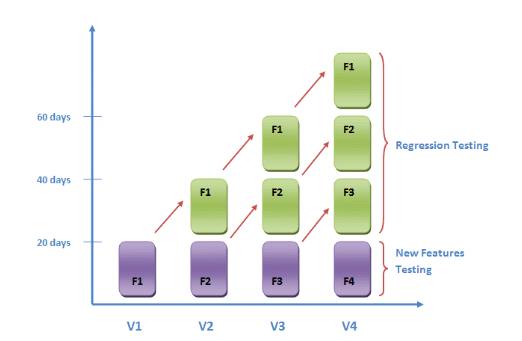
By TechnologyAzure and AWS Monitoring
By IndustryIntegrates with your stack
By InitiativeEngineering & DevOps Teams
TechnicalIt’s easy to get the help you need

We talked a bit about the Software Development Life Cycle (SDLC) in a recent post, but today, we’re going to dig a little deeper into one particular and crucial element in the testing phase, particularly for Agile development: regression testing.
Regression testing refers to the process of testing a changed or updated computer program to make sure the older software features – which were previously developed and tested – still performs exactly as they did before. One way to think about software regression is to think about somebody who implements a new air conditioning system in their home only to find that while their new air conditioning system works as expected, the lights no longer work.
Regression testing will often involve running existing tests against the modified code to make sure that the new code did not break anything that worked before the update. Regression testing can eliminate much of the risk associated with software updates. In addition to running existing tests, testers might tweak existing tests by introducing different secondary conditions as variables.
With the increased popularity of the Agile development methodology, regression testing has taken on added importance. Many companies today adopt an iterative, Agile approach to software development. For example, the great many software as a service (SaaS) providers will regularly update their features or add new functionality to their offerings with each software update. To ensure their core product remains unaffected by new feature additions, these companies will perform regression testing.
Regression testing is a fundamental part of the software development lifecycle. ProtoTech Solutions illustrates the concept nicely with this graph:

While regression testing is a vital element of the QA process, there are a number of challenges it brings.
As you and your team perform regression testing, there are some best practices to bear in mind.
Regression testing should not be confused with retesting. Regression testing is performed to ensure updated code has not caused any existing functionality to break. Retesting, on the other hand, refers to tests that are performed when a test case has identified some defects. Once the defects have been fixed, the tests are performed again to ensure the issues have been resolved.
Retesting is a higher priority than regression testing because issues have already been identified. Regression testing is focused on identifying potential issues.
Because regression testing can involve varying types of tests, there’s no single, clear-cut method for performing a “regression test,” per say. However, there are plenty of valuable insights and informative tutorials for incorporating regression testing practices into your overall SDLC. Check out the following tutorials and guides for more insights on selecting test cases, creating and executing a regression testing plan, best practices, and more:
Stackify's APM tools are used by thousands of .NET, Java, PHP, Node.js, Python, & Ruby developers all over the world.
Explore Retrace's product features to learn more.
If you would like to be a guest contributor to the Stackify blog please reach out to stackify@stackify.com